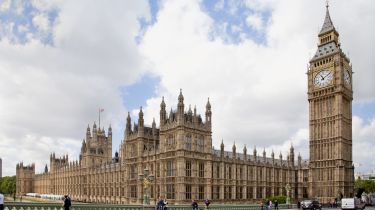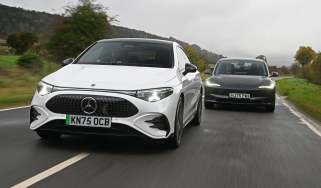Autumn Budget 2025 revealed: fuel duty, road pricing, tax and potholes
Rachel Reeves has unveiled her financial plans for 2026 and beyond; we explain how they will affect drivers

Chancellor Rachel Reeves has just unveiled her fiscal plans for the nation in the Autumn Budget for 2025/26.
While it’s easy to just switch off from all the Whitehall drama – trust us, after the last few years, we don’t blame you – this year’s Budget has sent shockwaves through the car industry and will have a tangible impact on millions of drivers across the country.
So with this in mind we’ve put together a guide explaining all of the changes that will affect motorists in particular.
Pay-per-mile tax for EVs
Designed to fill the gaping financial hole created by fewer drivers spending cash at the petrol and diesel pumps, a pay-per-mile tax works by charging EV drivers a fixed rate for every mile they drive over and above a standard flat rate of VED road tax.
From April 2028, those driving EVs, and thus not spending money on petrol at all, will be charged three pence per mile. This equates to £12 for a return trip from London to Manchester, or £250-300 per year for the average driver. Plug-in hybrid cars will also be subject to a pay-per-mile tax, but at a lower rate of one-and-a-half pence – both will rise over time in-line with the Consumer Price Index.
The government is yet to clarify how this will be enforced; drivers could have their mileage tallied at MoT exams, or they could potentially have to self-declare how far they’ve driven. With this in mind, the RCA”s head of policy, Simon Williams, said: “With fuel duty revenue set to decline as more EVs come on to the road, this is one lever the Chancellor clearly feels she can pull to keep the money coming in. The implementation will be critical, so the devil is very much in the details.”
Expensive car supplement threshold to rise
Intended to some extent as a counter to the above pay-per-mile charges, the Expensive Car Supplement that’s charged over and above the standard rate of VED road tax, will have its threshold lifted for EVs.
Cars costing over £40,000 are currently subject to an additional £425 per year surcharge, however, the minimum vehicle price where this is incurred will rise to £50,000 from April 2026 – but only for EVs.
At this stage it’s unknown whether EVs registered before April 2026 will benefit from the higher price ceiling. That said, given the ECS is technically a single payment spread over years two-to-five of ownership, it’s very possible that they won’t.

Fuel duty frozen for now, but 5p cut to ‘unwind’
Since 2022, a five pence cut to fuel duty has been in place to help ease the burden of exceptionally high fuel prices on drivers. Despite some think tanks suggesting these benefits aren’t being passed onto consumers, the cut has been extended until September 2026, as has the current freeze on fuel duty which has been in place since 2011.
The AA’s president, Edmund King, said: “Continuing the fuel duty freeze removes one of the big concerns for millions of drivers, their families, and businesses.”
It’s not going to stay like this forever, though; after September 2026 the 5p cut will be ‘unwound’ in three stages, while fuel duty rates will increase annually in-line with inflation from the financial year 2027-28.
Electric car grant expanded
The government has announced a £1.3 billion injection into the Electric Car Grant, extending the scheme for another year from March 2029 to March 2030. Since July, over 35,000 drivers have benefitted from the scheme, with grants ranging from £1,500 to £3,750 for what the government deems to be the most sustainably produced – or in other words, built in the UK.
Premium car cuts to Motability scheme
Motability is a lifeline to many disabled people across the UK, providing accessible transportation in exchange for their PIP (Personal Independence Payment). However, coinciding with government crackdowns on disability benefits and with as many as 860,000 people signed up to the scheme as of March 2025, some form of change seemed inevitable.
So what’s changed? After a deal with Rachel Reeves, Motability has agreed to remove what it classifies as ‘luxury vehicles’ from its listings; these include models from the likes of Alfa Romeo, Audi, BMW, Mercedes-Benz and Lexus. Interestingly, however, it does not include Volvos, nor Polestars.
Reeves told the Commons: “The Motability scheme was set up to protect the most vulnerable, not to subsidise the lease on a Mercedes-Benz.”
More funding for potholes
Last year in its first Budget, the Labour government announced that it would invest an additional £500 million per year for local road maintenance, which was bumped up to a total of £1.6 billion of funding for 2025.
With the Asphalt Industry Association suggesting that the total cost to fix the UK’s roads could be as high as £17 billion, more cash has been announced this year. Reeves says, thanks to the pay-per-mile EV tax, road maintenance funding will double in England by the end of the Parliament which, along with tough rules on council road expenditure, should help rebuild the nation’s crumbling streets.
EV charger rollout support
Announced alongside the boost for the Electric Car Grant, the government will invest an additional £200 million to aid with the rapid deployment of public EV charging infrastructure across the country to hit the UK’s target of 300,000 chargepoints by 2030.
Furthermore, despite worries that chargepoint operators could be hit with business rates that could cost the industry over £100 million per year, Reeves announced that the 100 per cent business rate relief will continue – a good thing for consumers given any additional costs would likely be passed onto those plugging-in.
Not included: lower EV charging costs
There is a huge disparity between the price of charging an EV at home and plugging in when you’re out and about. A higher rate of VAT (20 per cent vs five per cent for home charging) plus chargepoint operators looking to recoup the cost of charger installation mean that public charging can be just as, or even more, expensive than filling an internal combustion car with fuel.
This being the case and with EV sales not accelerating at the speed expected, many hoped that the public charging VAT rate would be cut to match that of domestic electricity in order to entice people from all housing situations into electric cars. Such a reduction has not happened, though, with the RAC pointing out that this “means drivers who can’t charge at home will continue to pay more.”
Come and join our WhatsApp channel for the latest car news and reviews...
Find a car with the experts





